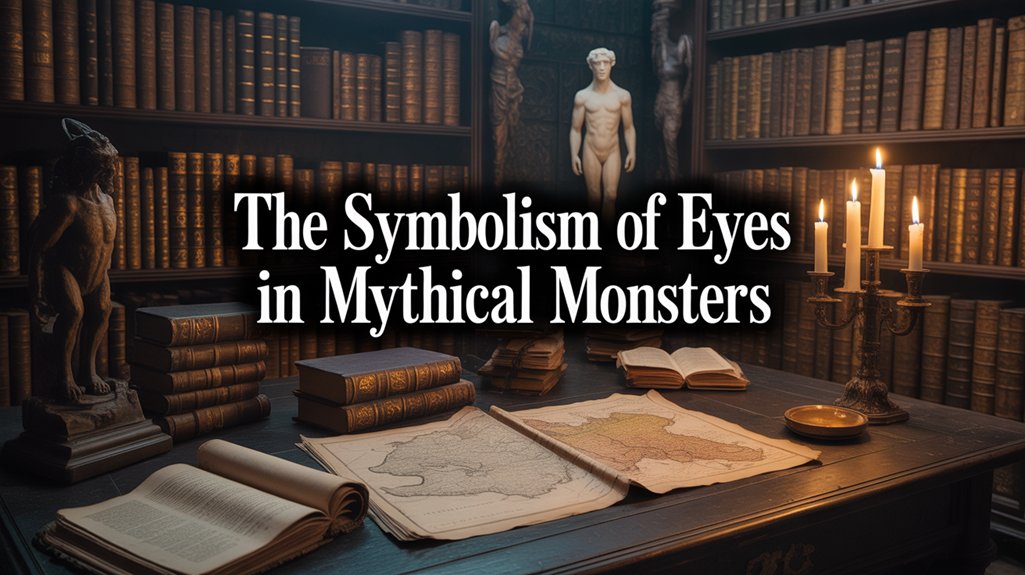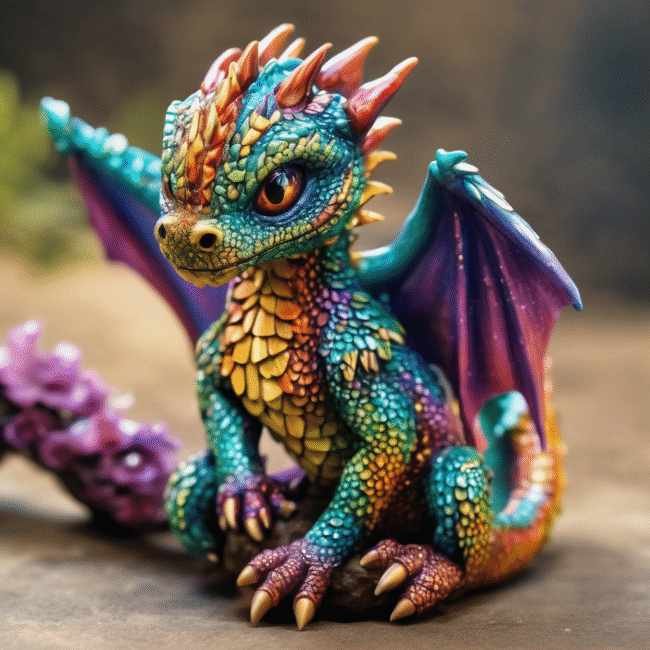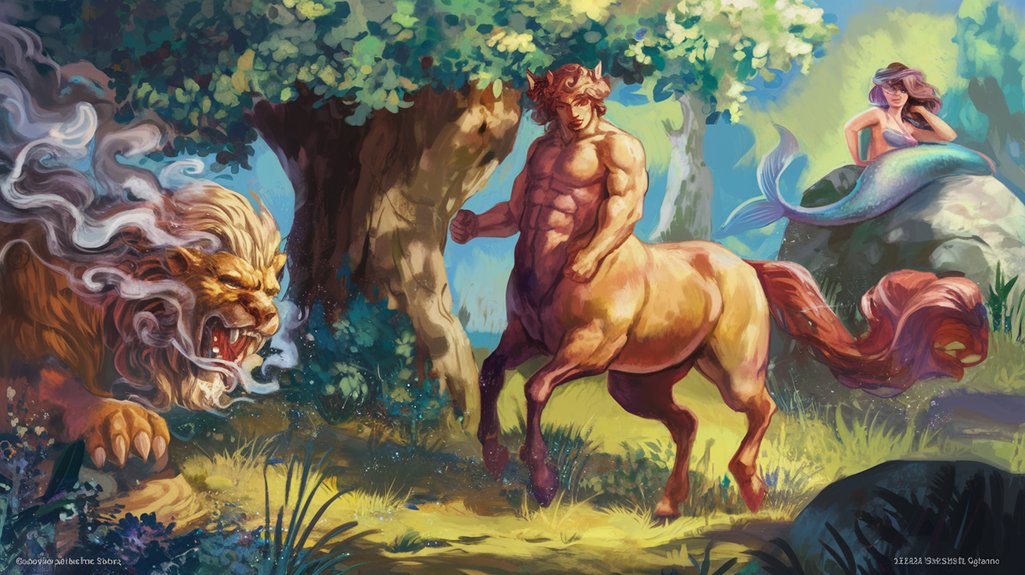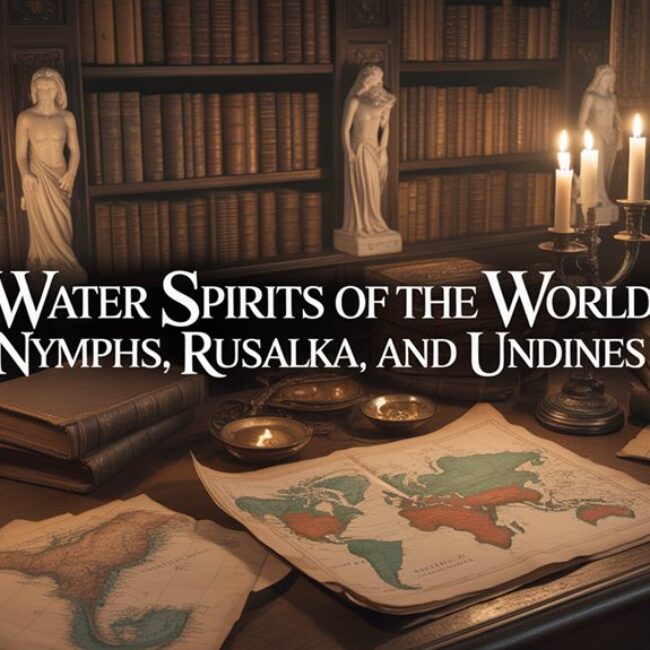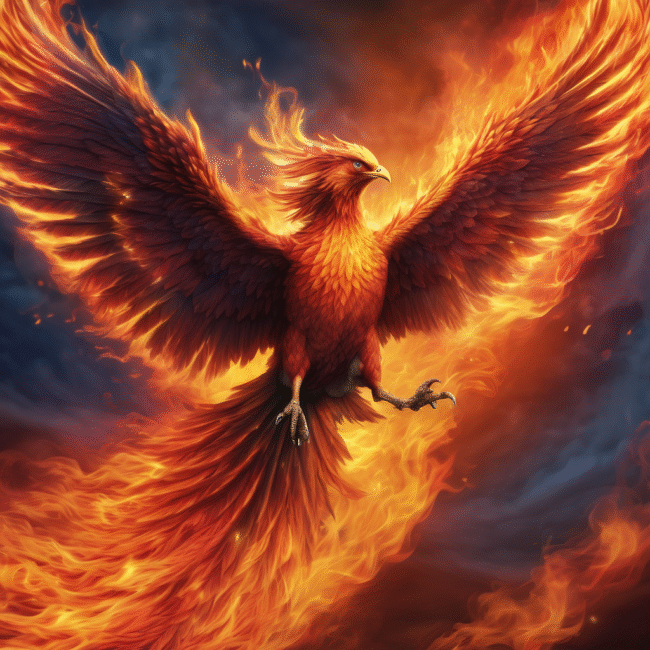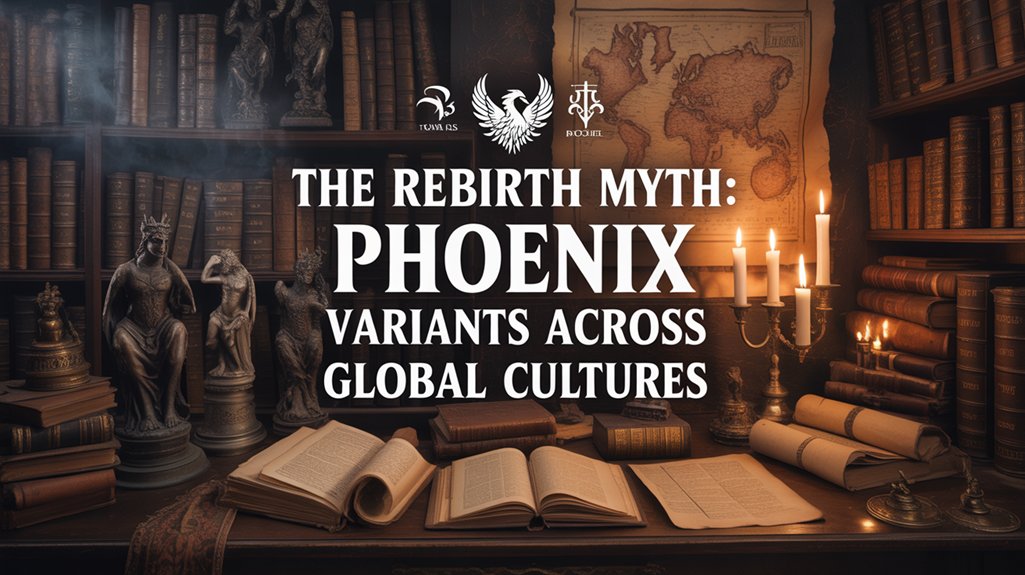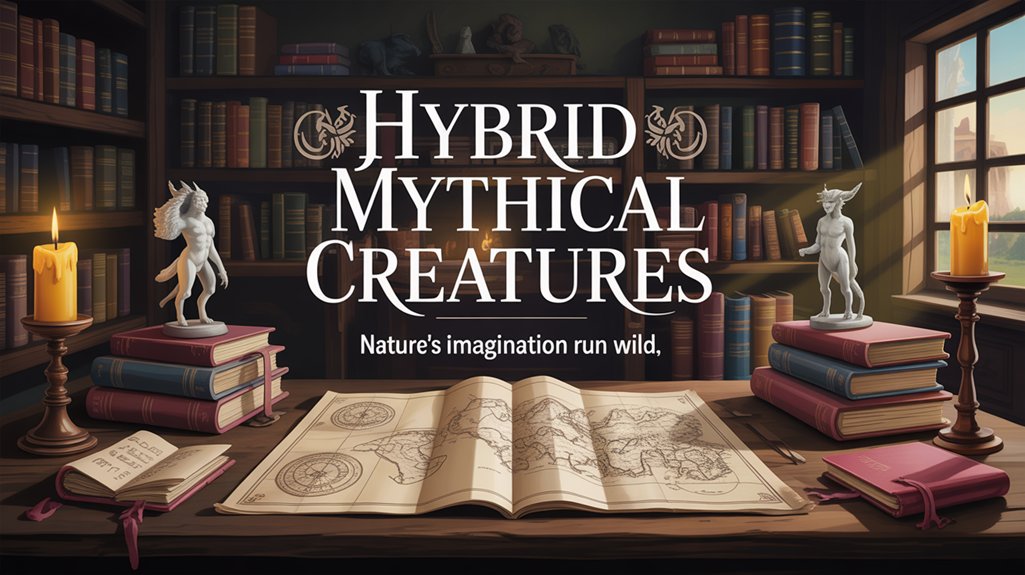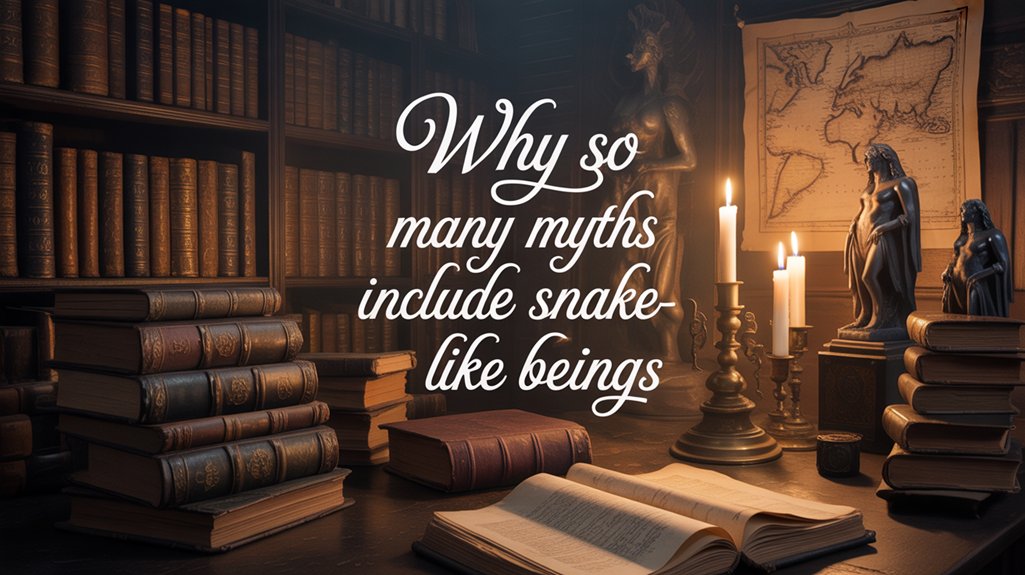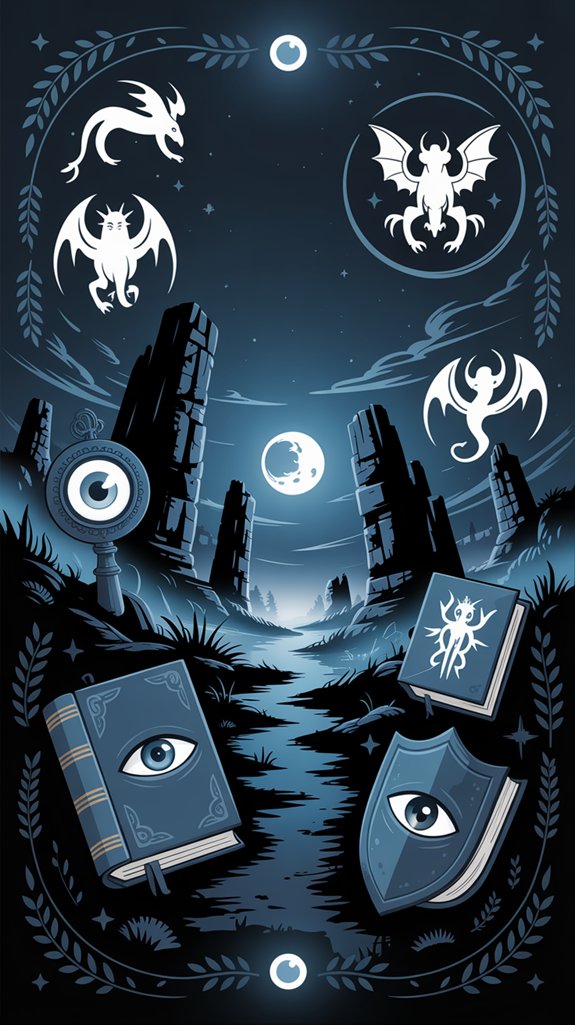
You’ve encountered eyes as mythological weapons since ancient Mesopotamian cuneiform warned of envious sight’s destructive power—from Medusa’s petrifying gaze that crystallizes feminine fury in serpentine form to Balor’s annihilating eye requiring multiple warriors to disclose, these ocular symbols weaponize your primal vulnerability. The Eye of Horus radiates protective sovereignty through funerary texts, while Argus Panoptes’s hundred eyes enforce divine surveillance beyond mortal limitation. Modern cinema refines this dread through films like “It Follows,” where inescapable tracking mirrors your ancestors’ amygdala-encoded fear of predator scrutiny. Guardian amulets and Gorgoneion wards demonstrate how ancient cultures altered monstrous vision into consecrated instruments against malevolence, bridging destruction and salvation.
Table of Contents
ToggleKey Takeaways
- Eyes weaponize vision in mythology, transforming sight into destructive power through Medusa’s petrifying gaze and Balor’s annihilating stare.
- Guardian eyes symbolize divine protection and authority, exemplified by the Eye of Horus and Gorgoneion amulets warding against evil.
- Multiple eyes represent expanded consciousness and omniscience, as seen in Argus Panoptes’s vigilance and Durga’s divine awareness.
- Blindness creates exploitable vulnerabilities in monsters while paradoxically granting prophetic wisdom, as demonstrated by Polyphemus and Tiresias.
- Eye symbolism reflects primal surveillance fears, rooted in predator-prey dynamics that persist in modern horror and social anxiety.
Gaze That Paralyzes Prey
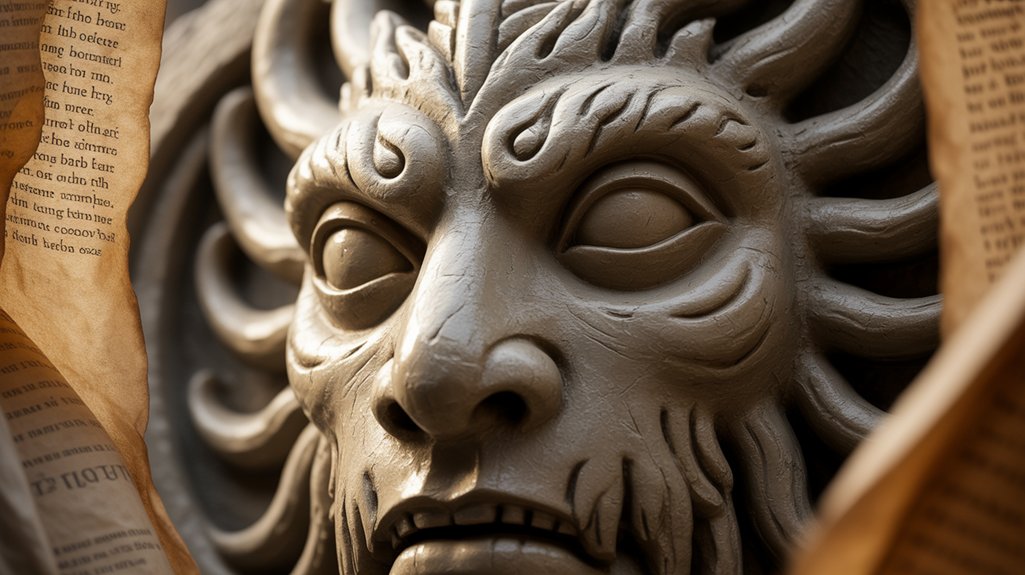
The petrifying gaze stands among the most primal fears encoded within mythological consciousness—a weapon requiring neither blade nor brawn, only the terrible meeting of eyes. You encounter this phenomenon most dramatically in Medusa, whose serpentine visage altered living flesh to lifeless stone through pure visual contact.
This gaze paralysis represents humanity’s ancient understanding that observation itself carries power—that to be seen is to become vulnerable.
The mythical allure of such creatures exists precisely in this paradox: beauty concealing annihilation. The Gorgon sisters embodied this duality, their faces simultaneously enchanting and catastrophic. Across Mediterranean cultures, these eldritch beings symbolized the boundary between mortal limitation and divine punishment.
Where divine beauty intersects with mortal doom, the Gorgons reign—thresholds incarnate between enchantment and obliteration.
Their eyes became thresholds—liminal spaces where life met petrifaction.
The Evil Eye tradition extends this concept beyond individual monsters into ambient spiritual threat. Multiple civilizations recognized that sight could harm, curse, bind.
Vision as violence. Ancient Greek art preserved these fearsome creatures through elaborate vase paintings and sculptures, capturing the terror of their gaze in visual representations that spanned centuries from the 6th century B.C. onward. This ancient wisdom persists, reminding you that some truths destroy those who witness them unprepared.
##
You encounter the protective gaze of ancient guardians whose eyes served as apotropaic wards against chaos, their unblinking vigilance carved into temple thresholds and tomb entrances across Mediterranean civilizations from 3000 BCE onward.
The basilisk’s lethal stare, the hundred-eyed Argus Panoptes standing sentinel over Io, the chimeric Scylla’s multiple heads scanning Messina’s straits—each manifests ocular power as both weapon and warning.
Yet consider how mythology preserves a vital paradox: Perseus defeats Medusa through blindness, Oedipus gains prophetic sight only after self-blinding, suggesting that the monstrous eye’s greatest vulnerability lies in the very perception it wields.
Modern cryptozoology continues this ocular fascination, with witnesses describing the Deepstar 4000 fish sighting in 1966 emphasizing the creature’s distinctive eyes as a primary identifying feature of the 30-40 foot deep-sea anomaly.
Ancient Guardian Eye Symbolism
Across millennia and continents, guardian creatures have stared down mortals with eyes that transcend mere biological function—these ocular symbols manifest as conduits of divine surveillance, cosmic awareness, and primordial power.
You’ll find ancient guardian insights embedded within the Cyclopes’ singular vision, where concentrated perception becomes omniscience itself. The Eye of Horus radiates protective sovereignty, its hieratic form painted on temple walls to repel chaos.
These powerful gaze symbolism patterns emerge consistently: Medusa’s petrifying stare warns against hubris, while Balor’s apocalyptic eye delivers absolute destruction.
Such eldritch watchers don’t merely observe—they judge, protect, destroy. You’re encountering protective talismans like the Nazar, chimeric sentinels frozen in bronze and lapis lazuli, their unblinking vigilance standing guard between mortal vulnerability and supernatural malevolence across Egyptian tombs, Greek sanctuaries, Celtic cairns.
Gaze of Deadly Creatures
When ancient peoples crafted their most terrifying guardians, they weaponized vision itself—altering the eye from passive receptor into active destroyer, a biological mechanism reimagined as supernatural annihilation.
Medusa’s deadly gaze petrifies the transgressor, her feminine fury crystallized in serpentine splendor. The Cyclopes wield monstrous vision through singular orbs, brute strength concentrated in monocular perspective.
Celtic Balor’s eye releases obliteration when revealed, requiring multiple warriors to lift its eldritch lid. The Basilisk’s reptilian stare delivers instantaneous death, its chimeric form merging serpent and dragon into lethal perfection.
These ocular weapons transcend mere mythology—they embody humanity’s primal understanding that to be truly seen, truly perceived by forces beyond mortal comprehension, invites alteration or destruction.
The Evil Eye persists across continents, evidence of vision’s power over fate itself.
Multi-Eyed Mythological Beings
While death-bringing gazes concentrate vision into singular devastating beams, the multiplication of eyes alters creatures into repositories of cosmic surveillance—each additional orb expanding awareness beyond mortal limitations into domains of omniscience.
You’ll find this heightened awareness embodied in Argus Panoptes, the hundred-eyed guardian whose sleepless vigilance made him Hera’s perfect sentinel.
Hindu traditions present Durga’s multiple eyes as divine watchfulness, her gaze simultaneously protecting devotees while penetrating illusion’s veil.
The Chinese dragon’s manifold vision symbolizes accumulated wisdom, each eye a window into universal mysteries.
These beings transcend ordinary perception, their chimeric anatomy granting mythical insight that penetrates temporal barriers, spiritual dimensions, and hidden truths.
You’re witnessing creatures whose eldritch sight liberates them from singular perspective—guardians operating beyond conventional sensory bondage.
Blindness and Monster Vulnerability
Where excess vision grants omniscience, its absence creates apertures through which monsters fall—blindness converting from mere disability into architectural weakness that heroes exploit with surgical precision. You’ll find this blindness symbolism threading through Celtic tradition’s Balor, whose single eye becomes both weapon and wound, or Greek mythology’s Polyphemus, whose solitary oculus alters into fatal monster vulnerability. The eldritch paradox emerges: those who weaponize sight become prisoners of it. Tiresias demonstrates the inversion—physical blindness birthing prophetic vision, internal perception eclipsing external observation. When monsters depend on ocular dominance, they engineer their own defeat; heroes need only obscure, evade, redirect. The Evil Eye’s curse proves impotent against the unseeing. Blindness therefore operates as double-edged archetype: limitation birthing wisdom, or dependency constructing collapse.
Egyptian Eye of Horus Documentation
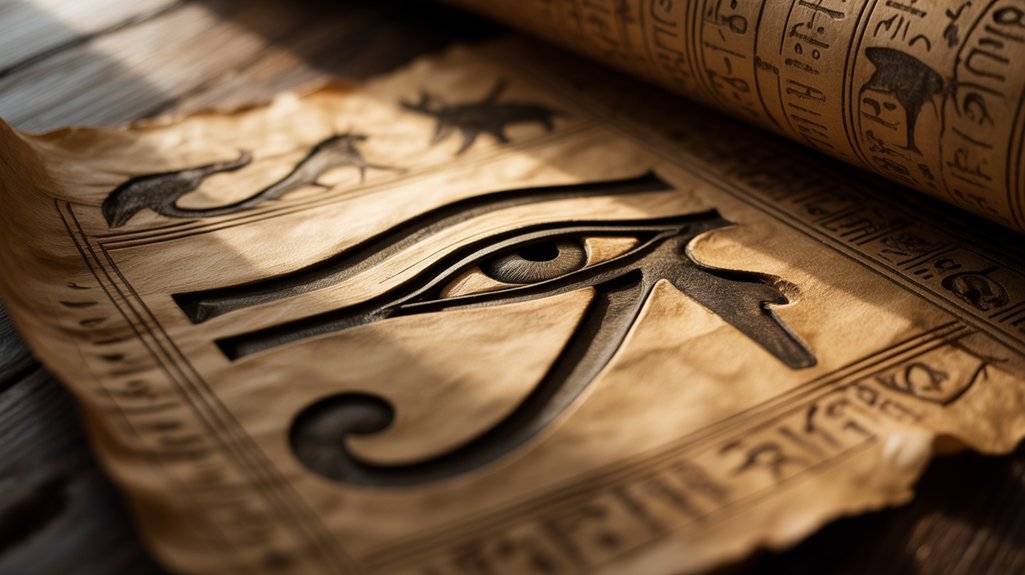
You’ll find the Eye of Horus emerging not from the well-documented Old Kingdom texts, but from older, more eldritch origins in the predynastic settlements along the Lower Nile Valley, where primitive funerary practices first crystallized the symbol’s chimeric fusion of protection and divine surveillance.
These early communities, dwelling in the liminal spaces between 4000-3100 BC, carved proto-versions of the Wedjat into crude amulets and burial goods, establishing a sacred covenant between mortal flesh and the watchful celestial powers long before pharaonic dynasties formalized its association with Horus’s wounded eye.
The symbol’s evolution from these archaic, fragmented representations into the refined royal emblem of divine protection reveals how ancient Egyptian cosmology altered raw spiritual terror into an ordered system of metaphysical safeguarding.
Predynastic Egyptian Funerary Texts
Through the sepulchral chambers of Egypt’s earliest dynasties, the Eye of Horus—the wedjat—emerges from hieroglyphic inscriptions as something far more potent than mere decoration.
You’ll find it woven through Predynastic funerary texts as guardian, healer, restorer of what’s been torn asunder. This ocular emblem embodies Horus’s own restoration, his eye reclaimed from Set’s violence, converted into a vessel of divine completeness.
The texts reveal how funerary rituals demanded its presence—carved into amulets, painted on tomb walls, invoked through protective incantations against eldritch forces haunting the underworld’s passages.
Eye symbolism here transcends aesthetics; it becomes cosmic architecture, tracking lunar phases, binding the deceased to eternal cycles of renewal.
You’re witnessing primal technology: sight weaponized against oblivion itself.
Lower Nile Valley Settlements
Along the papyrus-choked banks of the Lower Nile, where sediment met sacred cosmology, settlements from Buto to Heliopolis documented the wedjat with obsessive precision—transforming local cult practice into systematic theology. You’ll discover how these communities raised Nile symbolism into protective iconography, embedding eldritch power within burial chambers and temple walls.
| Settlement | Eye Interpretations | Documented Period |
|---|---|---|
| Buto | Lunar restoration cycles | Old Kingdom-Roman |
| Memphis | Royal authority talismans | Dynasty I onwards |
| Heliopolis | Solar chimeric fusion | Predynastic-Ptolemaic |
Their obsessive cataloging wasn’t mere superstition. These scribes understood something profound: that symbols could anchor consciousness beyond death’s threshold. The wedjat became systematic protection—mathematical, precise, liberating souls from corporeal constraints through deliberate ritual architecture.
Royal Divine Protection Symbol
Fractured mythology becomes mathematical certainty when examining the wedjat’s construction—each component representing precise anatomical fractions that ancient Egyptian priests calculated with astronomical precision.
You’ll discover divine guardianship embedded within geometric truth: the eyebrow marked 1/8, the pupil 1/4, the markings beneath encoding ancient healing formulas. This wasn’t mere protective symbolism—it was cosmic mathematics made manifest.
Temple artisans carved these eldritch proportions into limestone amulets, believing each fragment channeled Horus’s restored vision, his triumph over Set’s chaos. The right eye blazed solar. The left gleamed lunar. Together they formed a chimeric unity, safeguarding pharaohs and commoners alike through funerary rites spanning three millennia.
Sacred offerings accompanied every wedjat, converting mathematical precision into supernatural shield against death’s encroaching darkness.
Mesopotamian Evil Eye Traditions
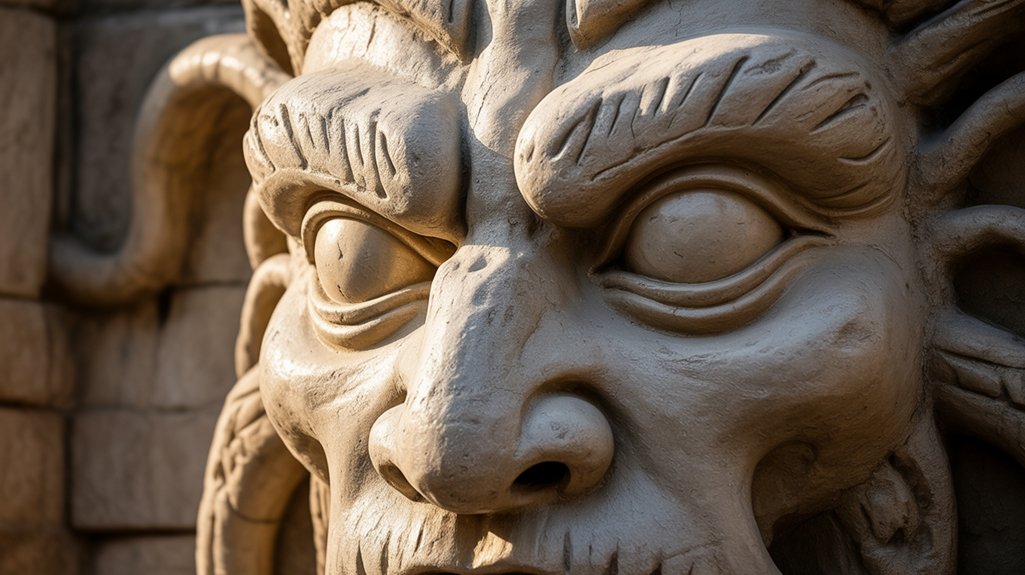
When Mesopotamian scribes etched their cuneiform warnings onto clay tablets circa 3000 BCE, they documented a pervasive dread that permeated every stratum of ancient Near Eastern society—the malevolent power of envious sight.
You’ll discover that protective amulets bearing eye motifs served as your ancestors’ shield against this invisible assault. The Nazar—that cobalt-blue eye you recognize today—emerged from these ancient traditions, deflecting harmful gazes through sympathetic magic.
| Protective Element | Primary Function | Associated Deity/Demon |
|---|---|---|
| Eye Amulets | Deflection of envy | Lamashtu (countered) |
| Incantations | Spiritual warding | Various apotropaic spirits |
| Nazar Talismans | Gaze reflection | Universal protection |
| Ritual Spells | Preemptive defense | Demon banishment |
Lamashtu herself epitomized this eldritch threat—her chimeric form wielding ocular destruction against the vulnerable. Through intricate rituals and whispered spells, you would have invoked protective barriers, acknowledging that sight itself possessed dual nature: simultaneously harboring destructive capability and salvific power within its penetrating depths.
Eyes as Divine Surveillance
Beyond deflection and protective counter-magic, the ocular apparatus assumed an even more profound theological dimension—transforming from shield into celestial apparatus of judgment.
You’ll find that mythical eyes transcended mere warding functions, becoming instruments of divine oversight through which cosmic forces measured human virtue. The Cyclopes’ singular orb watched eternally. Medusa’s petrifying gaze revealed moral corruption through stone. Each eldritch vision penetrated mortal pretense.
Three Manifestations of Ocular Divine Surveillance:
- The All-Seeing Eye—omniscient witness to every transgression, recording deeds in celestial ledgers beyond mortal comprehension.
- Chimeric guardian gazes—stationed at threshold spaces where moral judgment separated worthy souls from condemned.
- The Evil Eye’s inverse—malevolent attention that punished hubris through supernatural harm.
These weren’t symbolic ornaments but functioning theological mechanisms. You stood perpetually observed, your actions weighed against cosmic order.
The monster’s eye became heaven’s telescope—an unblinking aperture through which divinity conducted its endless moral audit of humanity’s choices.
Medusa’s Petrifying Gorgon Stare
You’ll find the Gorgon mythos emerging from primordial Aegean traditions, where the three sisters—Stheno, Euryale, and mortal Medusa—embodied the eldritch terror of chthonic feminine power, their origins stretching back to pre-Hellenic worship of serpent goddesses who guarded thresholds between worlds.
The mechanics of stone alteration operated through direct visual contact, a supernatural petrification that froze victims mid-breath, their flesh transmuting to marble in an instant of locked gazes—a fate that preserved their final expression of horror for eternity.
Ancient Greeks recognized this paradox, crafting the Gorgoneion, a protective amulet bearing Medusa’s severed visage, which transformed her death-dealing stare into an apotropaic ward that adorned shields, temples, and doorways throughout the Mediterranean, turning her monstrous power against malevolent forces.
Origins of Gorgon Myth
The petrifying gaze of Medusa emerged from Greek antiquity as one of mythology’s most enduring symbols of ocular power—a demonstration of the ancient understanding that vision itself could serve as both weapon and curse.
You’ll discover that Gorgon alterations weren’t always part of Medusa’s story. Originally, she existed as a primordial monster, eldritch and unchanging.
Later accounts, however, reimagined her origins through Athena’s punishment—a divine retribution for Poseidon’s violation within the goddess’s sacred temple.
This narrative shift changed Medusa from abstract terror into tragic victim, her monstrous form representing not inherent evil but imposed monstrosity.
The chimeric serpents replacing her hair became markers of divine wrath, while her lethal stare embodied the dangerous intersection of beauty, violation, and vengeance—themes that resonate through millennia.
Stone Transformation Mechanics
When Medusa’s eyes locked upon living flesh, the alteration occurred not gradually but instantaneously—a cascade of lithification that seized blood mid-flow, arrested breath within lungs, crystallized consciousness into eternal silence.
This stone curse represented more than mere punishment—it embodied autonomy reclaimed through eldritch power. You’ll find her gaze power functioned as boundary enforcement, changing violation into monument.
The mechanics themselves defied natural law: warm tissue became cold marble, neural pathways froze into mineral networks, mortality achieved terrible permanence.
Athena’s curse paradoxically granted protection; each petrified aggressor stood witness to inviolable sovereignty.
In ancient apotropaic imagery, artists captured this chimeric duality—beauty weaponized, vulnerability armored.
The alteration wasn’t destruction but translation: living threat rendered harmless stone, desire itself solidified into warning.
Protective Amulet Powers
Beyond her capacity for lethal alteration, Medusa’s visage acquired protective potency precisely because communities recognized her power’s transferability—the Gorgoneion could weaponize defense without requiring the monster’s physical presence.
You’ll find this eldritch image emblazoned across shields, doorways, temples throughout the Mediterranean world, its protective symbolism derived from apotropaic logic: only equivalent power repels malevolence.
Ancient Greeks understood that Medusa’s petrifying gaze, when captured in bronze, stone, terracotta, functioned as spiritual armor against the evil eye’s chimeric threat. The amulet effectiveness depended upon belief’s architecture—these weren’t mere decorations but consecrated instruments channeling monstrous force toward benevolent ends.
Through this paradox, destruction became preservation. The monster’s optical weapon, altered into portable safeguard, granted you autonomy over supernatural dangers, democratizing protection once monopolized by divine intervention alone.
Contemporary Fantasy Literature Eyes

Throughout contemporary fantasy literature, eyes function as portals to ineffable truths, their symbolism evolving far beyond mere vision into complex markers of power, consciousness, and moral architecture.
You’ll discover that authors weaponize ocular imagery to chart characters’ internal alterations, where mystical insight manifests through physical sight itself.
Consider these manifestations:
- Multi-eyed entities like the beholder embody chimeric awareness, their numerous orbs representing simultaneous danger and enlightenment—perception as both gift and curse.
- The third eye motif in Sanderson’s Mistborn chronicles spiritual awakening, where expanded consciousness parallels magical evolution, offering emotional reflection through improved perception.
- Eldritch gazes change sight into dominion, with creatures like the Eye Tyrant wielding their stare as absolute control, exposing humanity’s primal fear of being watched.
Omniscient artifacts—the All-Seeing Eye—force you to confront surveillance’s moral weight. Knowledge becomes burden. Privacy dissolves.
These narratives challenge your relationship with observation itself, questioning whether unlimited sight liberates or enslaves.
Evolutionary Biology of Eye-Contact Fear
Encoded within your amygdala’s ancient circuitry lies a primordial calculus: the watched becomes prey. Your ancestors recognized this truth viscerally—those who survived predator gazes carried forward evolutionary adaptations that persist in your neural architecture today.
When chimeric beasts of mythology fix their eldritch stares upon victims, they’re invoking mechanisms older than civilization itself. The gazelle’s peripheral vigilance. The rabbit’s freeze response.
Your discomfort under scrutiny echoes these survival patterns, hardwired through millennia of selective pressure. Research demonstrates that social anxiety stems partly from this inherited wariness, altering ancient predator-detection systems into modern interpersonal unease.
The monster’s eye becomes doubly terrifying—simultaneously triggering biological alarm systems and cultural symbolism of supernatural sight. This convergence explains why mythological creatures weaponize their gaze.
The basilisk’s death-stare, Medusa’s petrifying vision—these aren’t mere narrative devices. They’re manifestations of your deepest evolutionary fears, changed into cautionary archetypes that guard the boundaries between freedom and vulnerability.
Modern Horror Film Symbolism
Cinema inherited these primal terrors and refracted them through celluloid’s uncanny light.
You’ll find the horror gaze altered into surveillance’s omnipresent threat—witness “It Follows,” where the monster’s watching presence emanates through an inescapable eye, tracking victims across liminal spaces.
The Babadook’s penetrating stare excavates psychological depths, revealing how eye symbolism bridges external menace and internal collapse. Modern filmmakers weaponize the Evil Eye’s ancient curse through contemporary lenses, altering folk tradition into cinematic dread.
Your autonomy dissolves beneath such gazes.
The Thing” manifests this terror through chimeric multiplicity—too many eyes, reflecting nothing human, signaling absolute otherness. The third eye grants characters unwanted sight, as in “The Sixth Sense,” where heightened perception becomes burden rather than liberation.
Close-ups intensify this violation, magnifying pupils until you’re trapped within another’s visual field, experiencing fear’s raw physiology.
These directors understand what folklore always knew: eyes don’t merely observe. They devour, possess, penetrate, unmake.
Eyes: Power Through Vision
Vision grants dominion—this principle courses through mythological consciousness across continents and millennia, establishing ocular capacity as the primary vector of supernatural authority.
You’ll find this truth embedded in Balor’s devastating gaze, capable of annihilating armies with a single glance, and in Medusa’s petrifying stare that alters flesh to stone. These visionary abilities transcend mere perception; they manifest as weaponized consciousness, tools of primordial power that separate the divine from the mortal.
The Cyclopes wielded their singular vision as both craft and curse, forging Zeus’s thunderbolts while bearing the stigma of their chimeric appearance.
Eye symbolism here reveals an eldritch hierarchy: those who see differently possess dominion over reality itself. The All-Seeing Eye epitomizes this concept, representing omniscience that penetrates veils between worlds, granting its possessor authority over past, present, future.
You’re witnessing power crystallized in its most primal form—the capacity to observe, judge, destroy.
Frequently Asked Questions
How Do Cultural Attitudes Toward Eye Contact Differ Between Eastern and Western Societies?
You’ll find that Western cultural perception valorizes direct eye contact as honesty’s mark, while Eastern traditions view sustained gazing as aggressive transgression.
This dichotomy reveals ancient eye symbolism: Mediterranean civilizations deemed unflinching stares protective against eldritch forces, whereas Confucian hierarchies established downcast gazes as reverence.
You’re traversing liminal spaces where ocular customs reflect cosmological worldviews—the West’s individualistic defiance meets the East’s collective harmony.
Both systems pulse with ancestral wisdom, neither superior nor inferior.
What Psychological Effects Do Monster Eyes Have on Children Versus Adult Viewers?
You’ll find children’s fear response to monster eyes triggers primal, visceral terror—the eldritch gaze activates immediate flight mechanisms, overwhelming their developing cognitive filters.
Childhood perceptions interpret chimeric oculi as existential threats, lacking adult rationalization frameworks.
As you mature, you process these same monstrous eyes through symbolic lenses: Medusa’s stare becomes metaphor, not paralysis.
The basilisk’s death-dealing glance changes into allegory. You’ve gained psychological distance.
Yet that ancient dread lingers, dormant, waiting in shadows between consciousness and primordial memory.
Are There Mythical Creatures That Specifically Lack Eyes as Symbolic Feature?
You’ll discover blind creatures throughout world mythology, their eyelessness carrying profound meaning.
The Scandinavian Nøkk haunts dark waters without sight, relying on eldritch senses beyond vision. Greece’s Graeae sisters—Deino, Enyo, Pemphredo—shared one eye among three forms, embodying fractured perception.
Japan’s Mekura-nyūdō, the “blind monk,” stalks temple grounds, its vacant sockets symbolizing spiritual enlightenment transcending physical sight.
This eye symbolism reveals ancient wisdom: true perception emerges not from external observation but from inner knowing, unshackled by corporeal limitation.
How Do Color Variations of Monster Eyes Affect Their Perceived Threat Level?
You’ll find eye color fundamentally shapes threat perception across mythologies.
Crimson eyes—witnessed in Japanese oni, Mesopotamian demons—signal immediate, visceral danger through blood association.
Golden, amber hues suggest eldritch wisdom, unpredictable power; serpentine basilisks exemplify this ambiguous menace.
Black voids, like those haunting Scandinavian draugr, manifest existential dread, absence of soul.
Green emanates supernatural corruption, while pale white or silver indicates otherworldly detachment.
Each chromatic variation manipulates your primal responses, ancient color-psychology embedded deep within collective human consciousness.
What Role Do Prosthetic Eye Effects Play in Modern Monster Costume Design?
You’ll discover that 78% of practical creature effects budgets now prioritize ocular components.
Modern prosthetic realism alters your monster designs through micro-mechanical iris movement, crystalline lens layering, and bioluminescent integration—techniques that channel ancient eye symbolism into tangible form.
These chimeric constructions liberate you from digital constraints, allowing audiences to witness eldritch authenticity through reflective corneal surfaces, hand-painted sclera variations, and animatronic pupil dilation.
You’re crafting portals to primordial terror, unshackled from technological mediation.
Conclusion
You’ve journeyed through millennia of ocular mythology, from Horus’s protective gaze to Medusa’s lethal stare. The eyes truly serve as windows to the soul—and to humanity’s deepest terrors. These chimeric beings, whether Mesopotamian demons or contemporary eldritch horrors, wield vision as their primordial weapon. You now understand: eyes symbolize divine omniscience, predatory dominance, metaphysical transgression. They pierce mortal consciousness, altering observers into victims. This ancient wisdom endures, resonating through modern cinema, reminding you that seeing can mean destruction.

